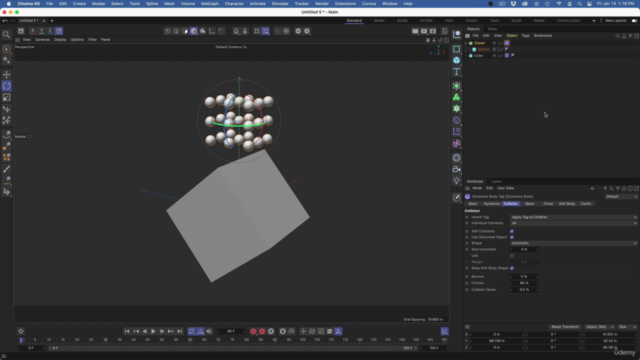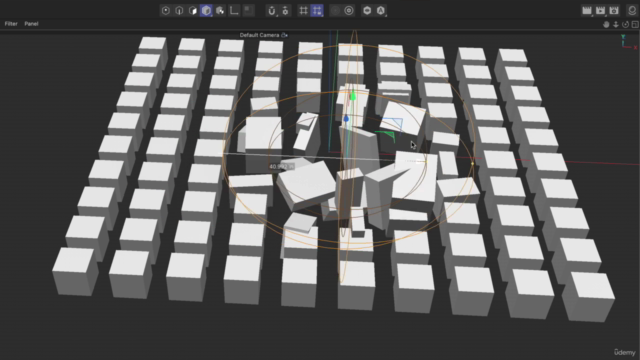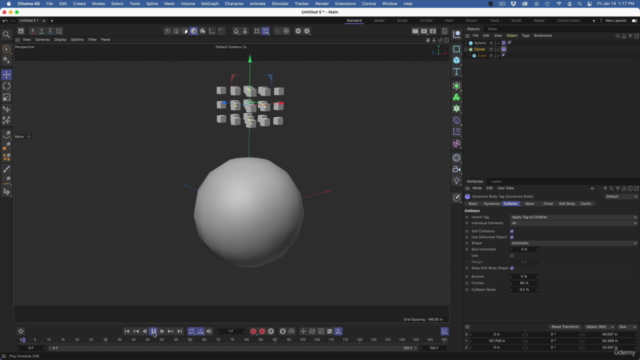A Beginner’s Guide to 3D Simulation in Cinema 4D

Why take this course?
🎉 A Beginner’s Guide to 3D Simulation in Cinema 4D 🎓
Welcome to a journey into the captivating world of 3D motion graphics, where every pixel tells a story and every movement is an art form. This course is meticulously crafted for aspiring 3D artists who are eager to dive into the exhilarating realm of 3D simulation using Cinema 4D – one of the most powerful tools in the industry. Let's embark on this creative adventure together!
Course Overview
📚 Part 01: Introduction to 3D Simulation Techniques Get ready to explore the basics of 3D simulation with Cinema 4D, as we cover essential tools and techniques that form the cornerstone of 3D motion graphics. We'll start with a comprehensive look at Mograph cloners, random effector, rigid body tag, collider body tag, friction and bounce settings. You'll learn how to manipulate parametric primitives and various geometry to achieve dynamic effects that bring your scenes to life. By the end of this section, you'll have created a mesmerizing vase filled with spheres, demonstrating the power of Cinema 4D's simulation capabilities.
- Overview of key simulation tools
- Hands-on experimentation with geometry and dynamics
- Practical application of effectors and fields
Project-Based Learning
🌟 Part 02: Domino’s Project Put your newfound knowledge to the test with a real-world project: recreating the iconic domino effect. You'll model, texture, and simulate an array of dominos falling in a sequence that mimics the laws of physics. Along the way, you'll master the use of the MoGraph Cloner, adjust cloner distribution settings, and fine-tune rigid body and collider body tags. This project will guide you through the process of setting up a simulation, refining physics properties, and rendering your animation for a stunning final output.
- Modeling and texturing dominoes
- Mastering the MoGraph Cloner and selection fields
- Advanced physics settings and initial velocity control
- Finalizing the animation with proper render settings
Advanced Simulation Techniques
🚀 Part 03: Maze Project As you progress, we'll tackle a more complex project – simulating a sphere navigating through a 3D maze. This will challenge you to apply your skills in modeling environments, setting up colliders, duplicating objects, and applying procedural materials with gradients. You'll also learn how to animate the camera to follow the sphere's path and ensure that the render settings convey the full story of the simulation.
- Advanced maze modeling and collision handling
- Duplication and animation techniques for complex simulations
- Applying materials and gradients for visual depth
- Camera animation and render setting optimization
Your Learning Path
With a perfect blend of theoretical knowledge and hands-on projects, this course is designed to ensure you not only understand the concepts but can apply them in real-world scenarios. Each lesson builds upon the previous, gradually increasing in complexity to challenge and inspire your creativity.
By the end of this course, you'll have a solid foundation in 3D simulation within Cinema 4D, ready to tackle any motion graphics project with confidence. Whether you're aiming for a career in animation, visual effects, or digital art, this course will equip you with the skills necessary to stand out in the competitive field of 3D motion graphics.
Enroll now and transform your passion for 3D into professional mastery! 🎬✨
Course Gallery




Loading charts...